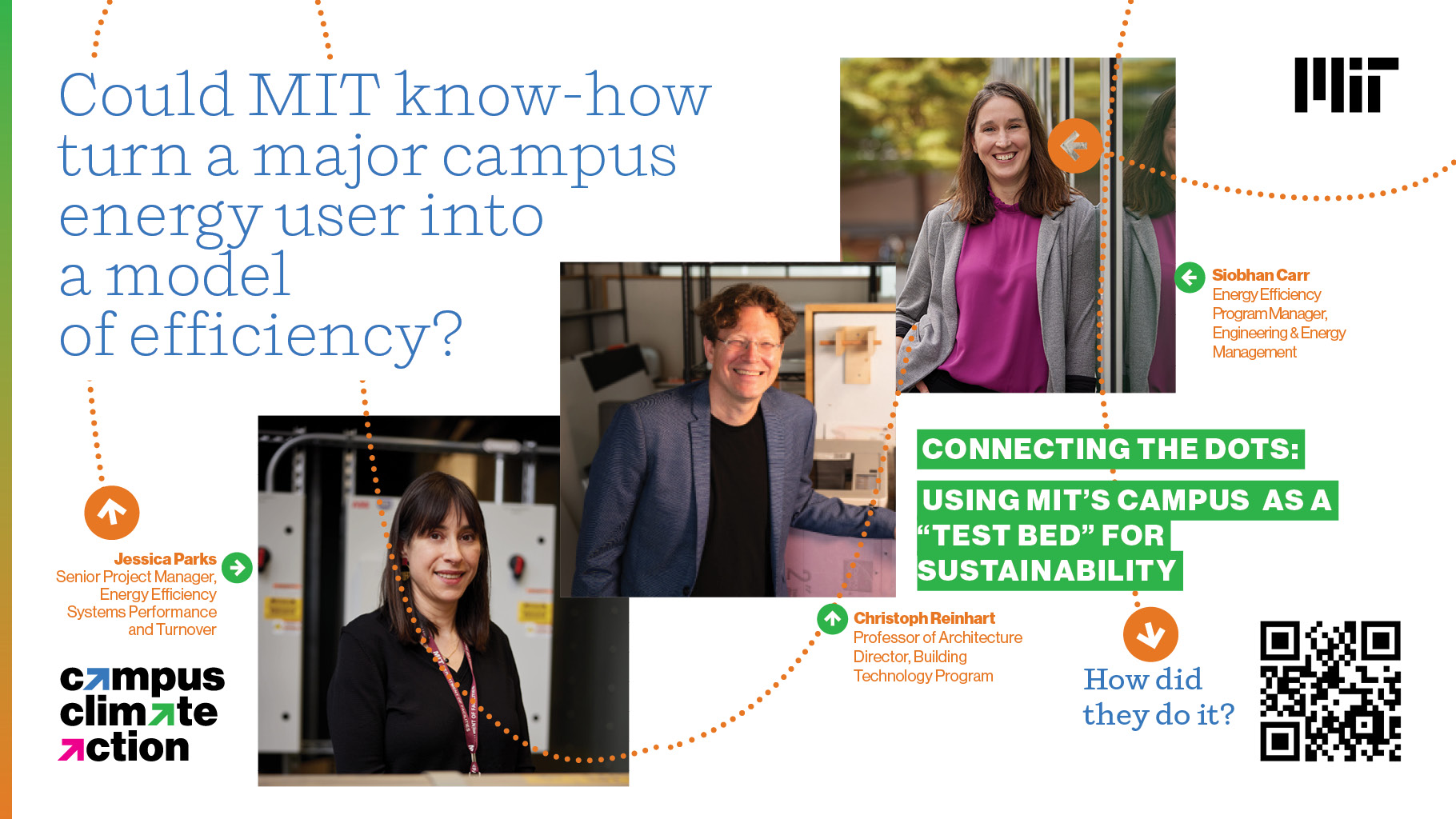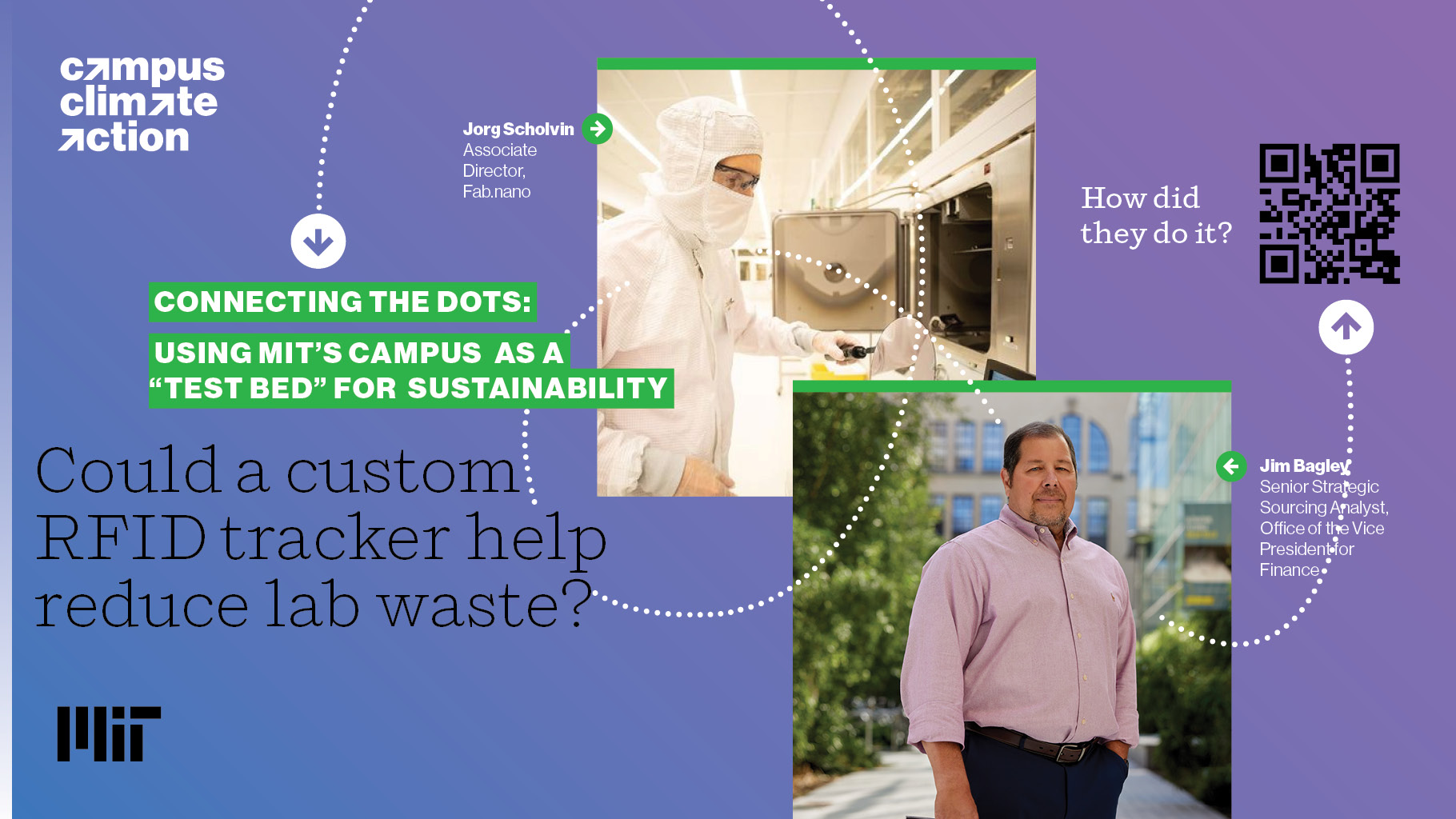If you’ve ever had that feeling of losing something in the laundry, you might be able to relate to challenges faced in labs at MIT—just on a much bigger scale. MIT.nano, the Institute’s shared-access research facility for nanoscience and nanotechnology, grappled with maintaining its inventory of lab suits as too often the cleanroom apparel (also called bunny suits) weren’t coming back from the cleaners in the same volume sent out, leading to shortages. Instead of succumbing to lost laundry and missing sizes, Fab.nano Associate Director Jorg Scholvin and Senior Strategic Sourcing Analyst Jim Bagley figured out how to efficiently manage the MIT.nano cleanroom bunny suit inventory with an innovative radio frequency identification (RFID) tagging system. Tagging the protective suits with RFIDs has not only been instrumental in reducing loss, but also in understanding what sizes are needed and how usage fluctuates from week to week, which limits the number of new bunny suit purchases each year, reducing campus waste.
Background
Clean room garments are necessary for the lab work that goes on at MIT.nano, so keeping them in stock for users of all sizes is essential. There are various types of these suits on the market, including one-time use disposables, rented suits, or a purchased in-house inventory. While single use suits eliminate the challenges of items lost in the laundry, their environmental impact is much worse than the reuseable counterparts. A lifecycle assessment by Vozzola et al. (2018) compared the sustainability of reusable and disposable cleanroom apparel and found that reusable options significantly outperformed disposable ones in all categories, including process energy, natural resource energy, greenhouse gas emissions, and blue water consumption. The study also demonstrated that a reusable system can reduce solid waste sent from a cleanroom facility to the landfill by 94 to 96 percent. The reusable version of the lab suits has clear environmental advantages over their disposable alternatives—if they can be kept clean and in circulation.
The Approach
Since 2019, MIT.nano has sent out more than 50,000 reusable items to laundry. As with any laundry service, sometimes items go missing—either sorted into the wrong customer’s order or left behind at the facility. With lost items, the cost of replacement or inconvenience of not having a needed size is a concern. As MIT.nano identified ways to reduce loss, they explored the different lab suit options available—single use, rented, or a purchased inventory. Single use suits were quickly eliminated for its environmental impact, and rented options did not solve the issue of cost— temporarily lost or infrequently used items still needed to be paid for through the rental services. Hand-counting incoming and outgoing items was not a practical solution.
MIT.nano decided on the idea of RFID tagging for its owned inventory, aiming to minimize attrition and keep a right-sized inventory—therefore also reducing waste. While RFID tags are low cost and easy to attach solution, commercial RFID readers can be expensive. Responding to this challenge, MIT.nano’s facilities team developed and built their own custom RFID reader. With the system, bunny suits are rapidly scanned in and out at MIT.nano, tracking the suits and minimizing loss.
By implementing an inventory management system using RFID laundry tags and a custom-made reader developed in-house, MIT.nano successfully minimized inefficiencies and enhanced overall facility operations. Compared to disposable bunny suits, which MIT.nano has used intermittently during early start-up of the facility, the in-house inventory and RFID tracking has avoided an estimated two tons of plastic waste.
Sustainability and climate commitments
While this effort focuses on lab wear, it aligns with MIT.nano's overall mission to foster innovation across MIT by providing leading-edge facilities and resources for research, while also contributing to sustainability goals through waste reduction and optimized resource utilization.
Sustainability was a priority in the design and construction of MIT.nano, which received the U.S. Green Building Council’s LEED Platinum certification for sustainable practices in new construction. “A shared commitment to sustainable principles from the outset made this recognition possible,” said Vladimir Bulović, the founding faculty director of MIT.nano and the Fariborz Maseeh Chair in Emerging Technology.
Nicholas Menounos, MIT.nano’s Assistant Director of Infrastructure, highlighted the importance of ongoing sustainability efforts within the building’s operations when the facility opened in 2018: “Sustainability isn’t a moment in time, it’s a process. Now that MIT.nano is operational, we will continually try to find ways we can change and optimize how the building operates,” he promised. The RFID-enabled laundry inventory management system is a prime example of this commitment to continual improvement and environmental stewardship. It also aligns with MIT’s commitment to “design out waste” from campus operations. Sustainable procurement practices and reuse, like those demonstrated by MIT.nano are two strategies to help MIT reach its goal of reducing waste from campus by 30 percent from a 2019 baseline.
Results, Reflection and Takeaways
The initial investment in RFID technology and reader development has paid off in substantial cost savings and operational efficiencies. The system has allowed MIT.nano to right-size its inventory, ensuring that the facility maintains an optimal supply of bunny suits in response to increasing facility usage over time. Purchasing and tagging inventory also more seamlessly enables MIT.nano to provide size inclusivity for all user ensuring inventory readily available regardless of size. This adaptive approach to inventory management has not only enhanced operational efficiency but also facilitated better resource utilization within the facility.
Sustainability was a secondary goal of this system which limits waste through a right-sized, reusable inventory. This approach to inventory management can serve as a model for other departments, labs, and centers aiming to limit disposables and balance cost savings and sustainability.







